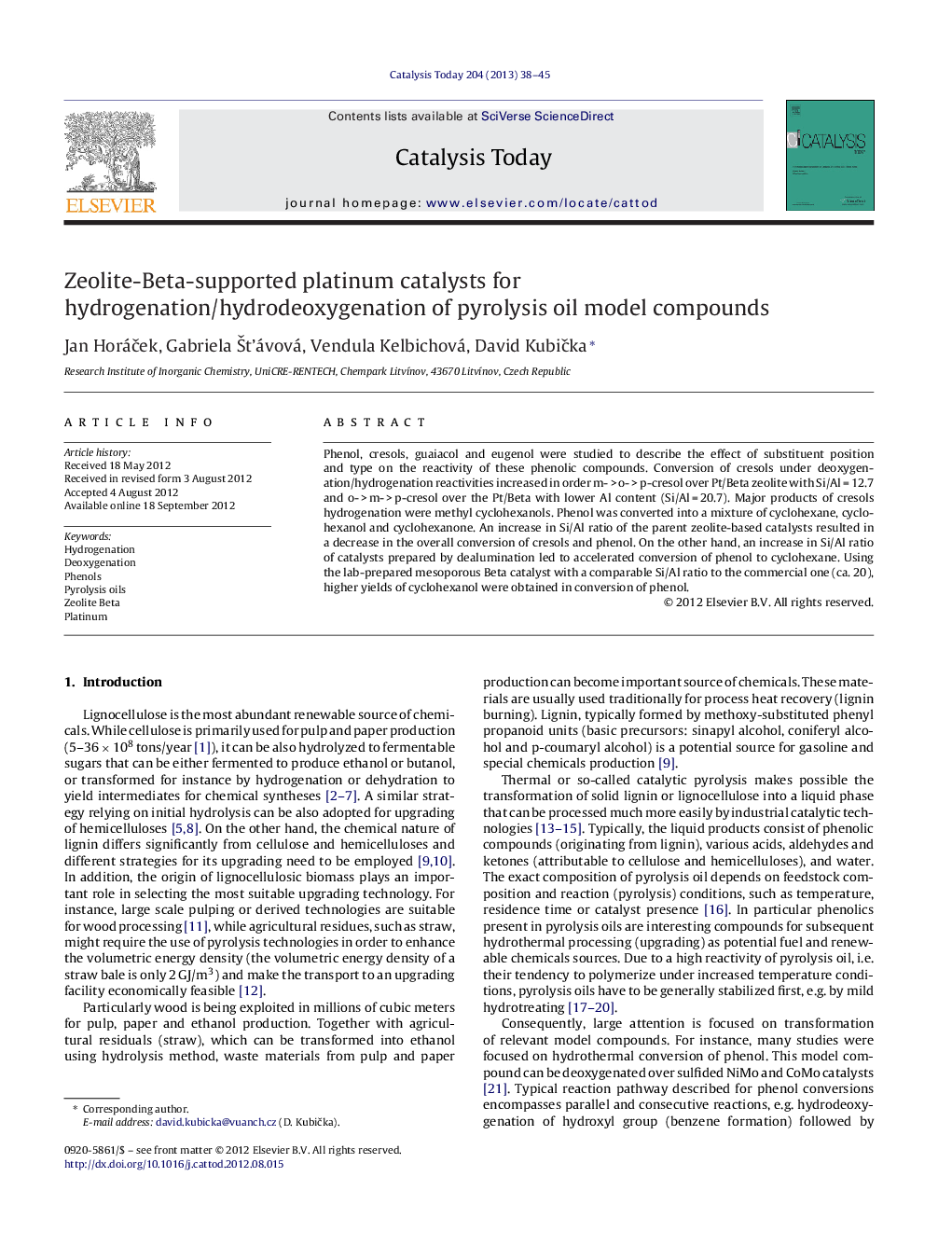| Article ID | Journal | Published Year | Pages | File Type |
|---|---|---|---|---|
| 54888 | Catalysis Today | 2013 | 8 Pages |
Phenol, cresols, guaiacol and eugenol were studied to describe the effect of substituent position and type on the reactivity of these phenolic compounds. Conversion of cresols under deoxygenation/hydrogenation reactivities increased in order m- > o- > p-cresol over Pt/Beta zeolite with Si/Al = 12.7 and o- > m- > p-cresol over the Pt/Beta with lower Al content (Si/Al = 20.7). Major products of cresols hydrogenation were methyl cyclohexanols. Phenol was converted into a mixture of cyclohexane, cyclohexanol and cyclohexanone. An increase in Si/Al ratio of the parent zeolite-based catalysts resulted in a decrease in the overall conversion of cresols and phenol. On the other hand, an increase in Si/Al ratio of catalysts prepared by dealumination led to accelerated conversion of phenol to cyclohexane. Using the lab-prepared mesoporous Beta catalyst with a comparable Si/Al ratio to the commercial one (ca. 20), higher yields of cyclohexanol were obtained in conversion of phenol.
Graphical abstractFigure optionsDownload full-size imageDownload high-quality image (116 K)Download as PowerPoint slideHighlights► Dealuminated zeolite Beta exhibited higher activity in phenol hydrogenation/deoxygenation than its parent form. ► Main product over dealuminated zeolite Beta was cyclohexane while over the parent material cyclohexanol was formed. ► The type and position of substituents in respect to hydroxyl group affected reactivity of phenolic model compounds.
